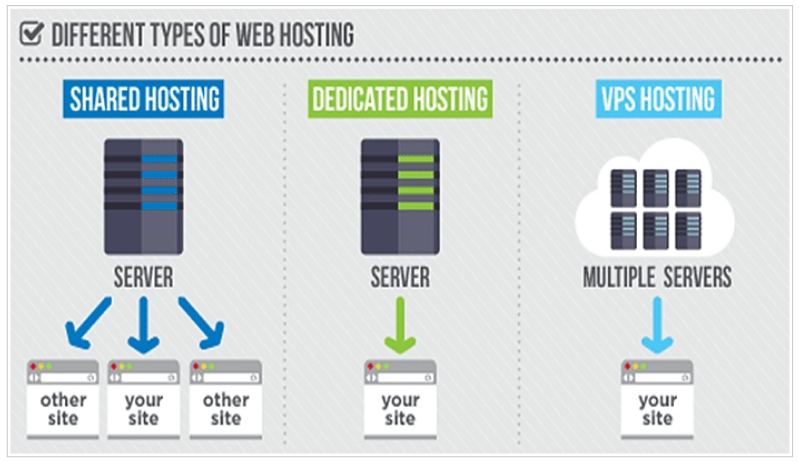The cheapest and most commonly-used web hosting is called 'shared web hosting'. It's so-called for a reason: your website is hosted on a server or computer that also hosts (or is shared with) dozens or hundreds of other companies' websites.
Here's what you should consider if you're running on a shared hosting platform:
- Most shared-hosting platforms don't back-up their websites. The good ones back-up their websites once a week and overwrite the previous backup when a new one is done every week.
- Why do backups matter? If your website gets hacked or it crashes or if you make a mistake and delete content that you want to recover, you're out of luck! You may have to start all over again
- Most shared-hosting platforms don't allow you to modify the server settings. If you need to run a particular version of PHP for one website while other websites are using another version of PHP, you're out of luck. You will be asked to upgrade your account to an expensive option.
- Most shared-hosting platforms don't have 24-hour support. If your website breaks in the middle of the night right before your major presentation to an important customer, you're on your own!
- Most shared-hosting platforms don't offer free SSLs (data encryption in transit). You usually have to purchase an SSL certificate on your own or from the hosting company for a lot more than the annual cost of your hosting plan!
- Most shared-hosting platforms allow you to host only one website per account. What if you want a Development environment and a Production environment? Or what if you run multiple businesses?
- While CPanel is a great utility and graphical user interface for managing shared-hosting accounts, it's licensed software that's factored into the cost of your shared web hosting. That's money you're throwing away.
- We could go on... You get the point.
Sure, shared hosting is cheap and convenient, but it has hidden costs that you only find out when it's too late.
We currently support many customers who came to us just because they were tired of having their websites hacked and having to pay a developer to design it all over again.


